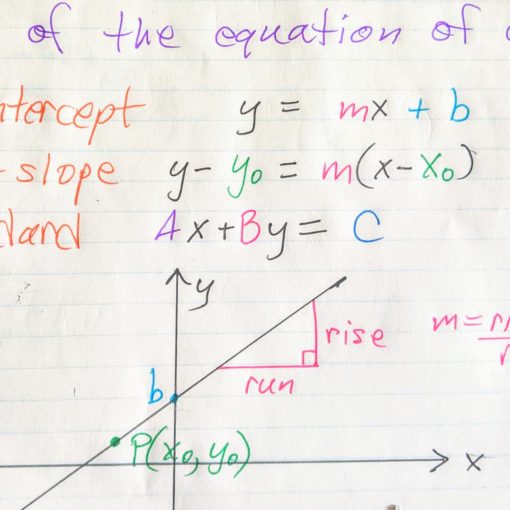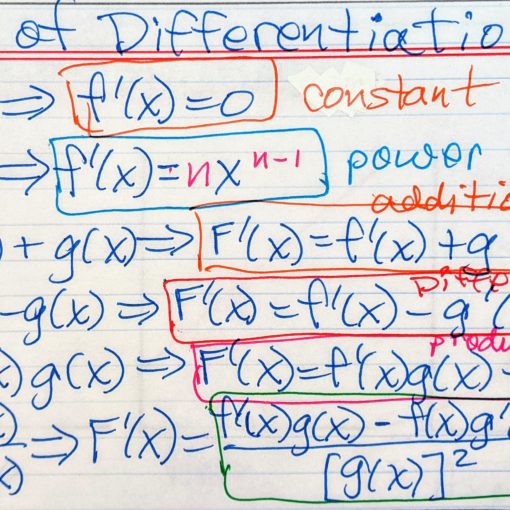Learn how to represent the motion on a straight line. From this representation we can derive the velocity of a particle on the straight line and it’s acceleration using the first and second derivatives of the position of the particle, respectively. Practice this with exercises and applications below.
You may also like
There is more than one way to write the equation of a line in the Cartesian plane. Learn the different ways. Practice writing the equation of a line in different ways.
Learn what a power is and how to identify them. We will also look at some rules on how to perform “arithmetic” operations with powers. For example, multiplying, dividing, adding and subtracting powers. We will also look at powers of power.
Learn and practice the rules of differentiation with Raise My marks math tutoring and exercises, Ottawa, Toronto, Canada, IB math, AP calculus AB/BC, university, pre-calculus and more math.
Learn what the slope intercept form of a line in the Cartesian plane is. Practicing finding the equation of lines in the plane.




